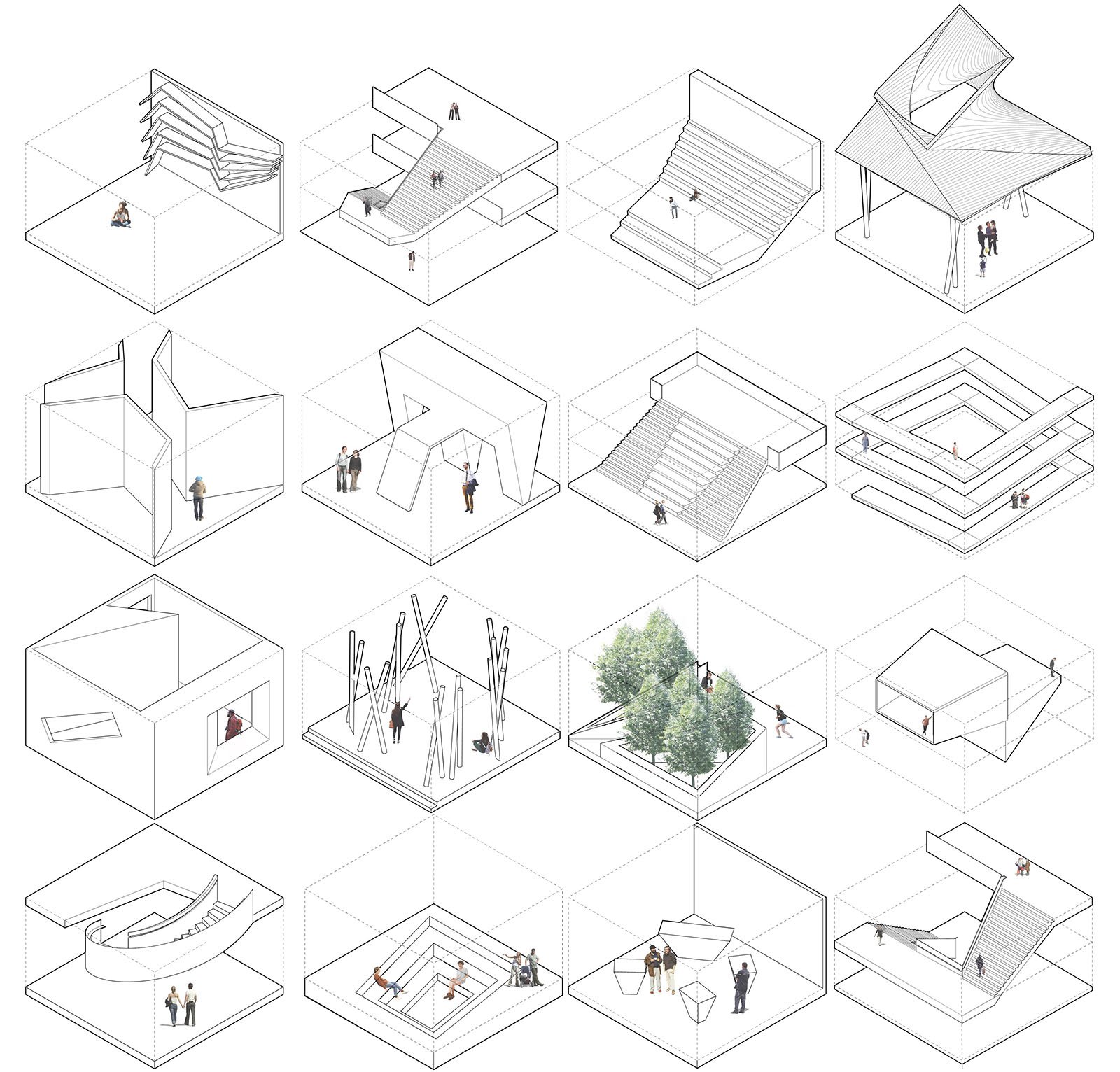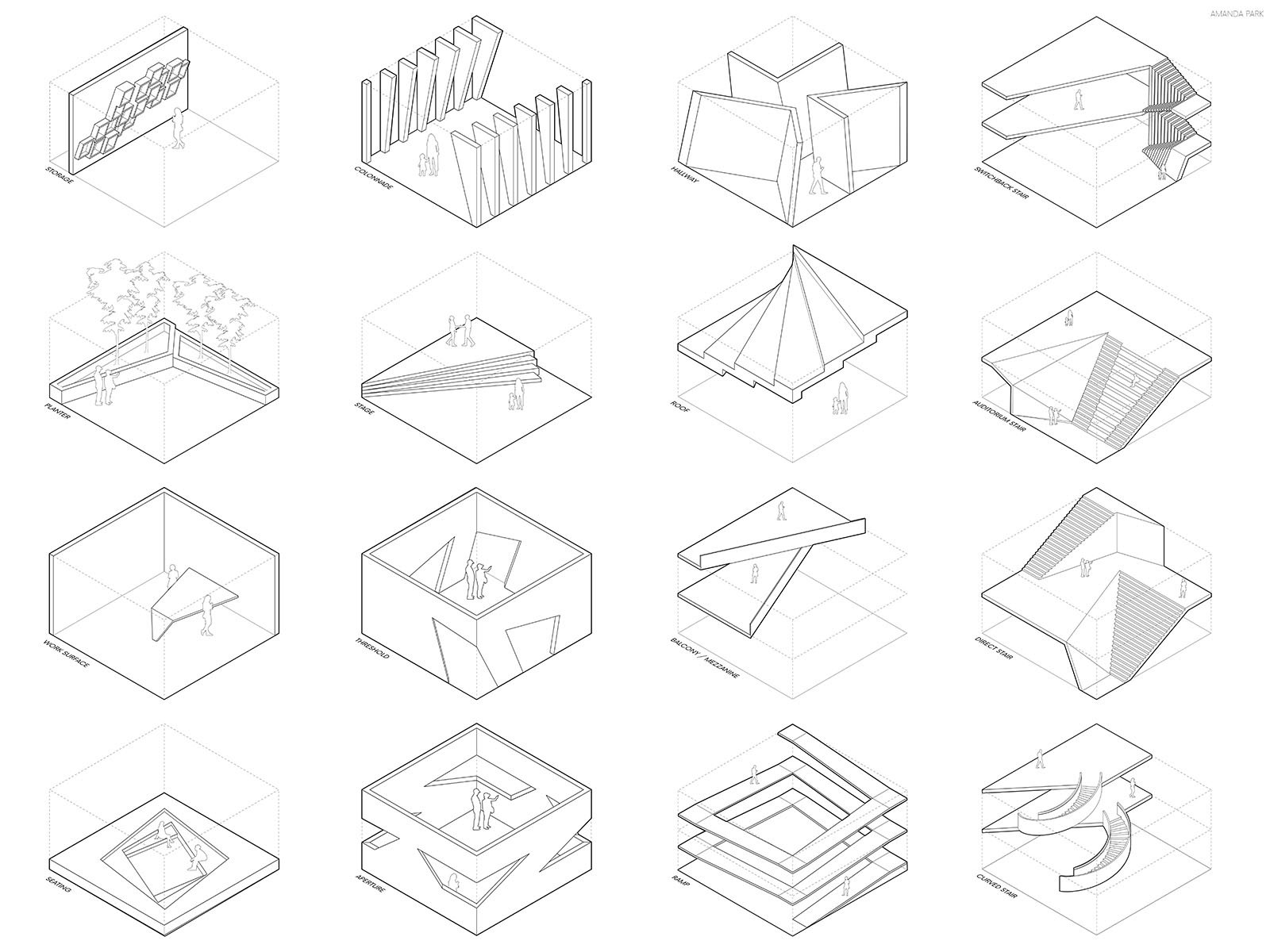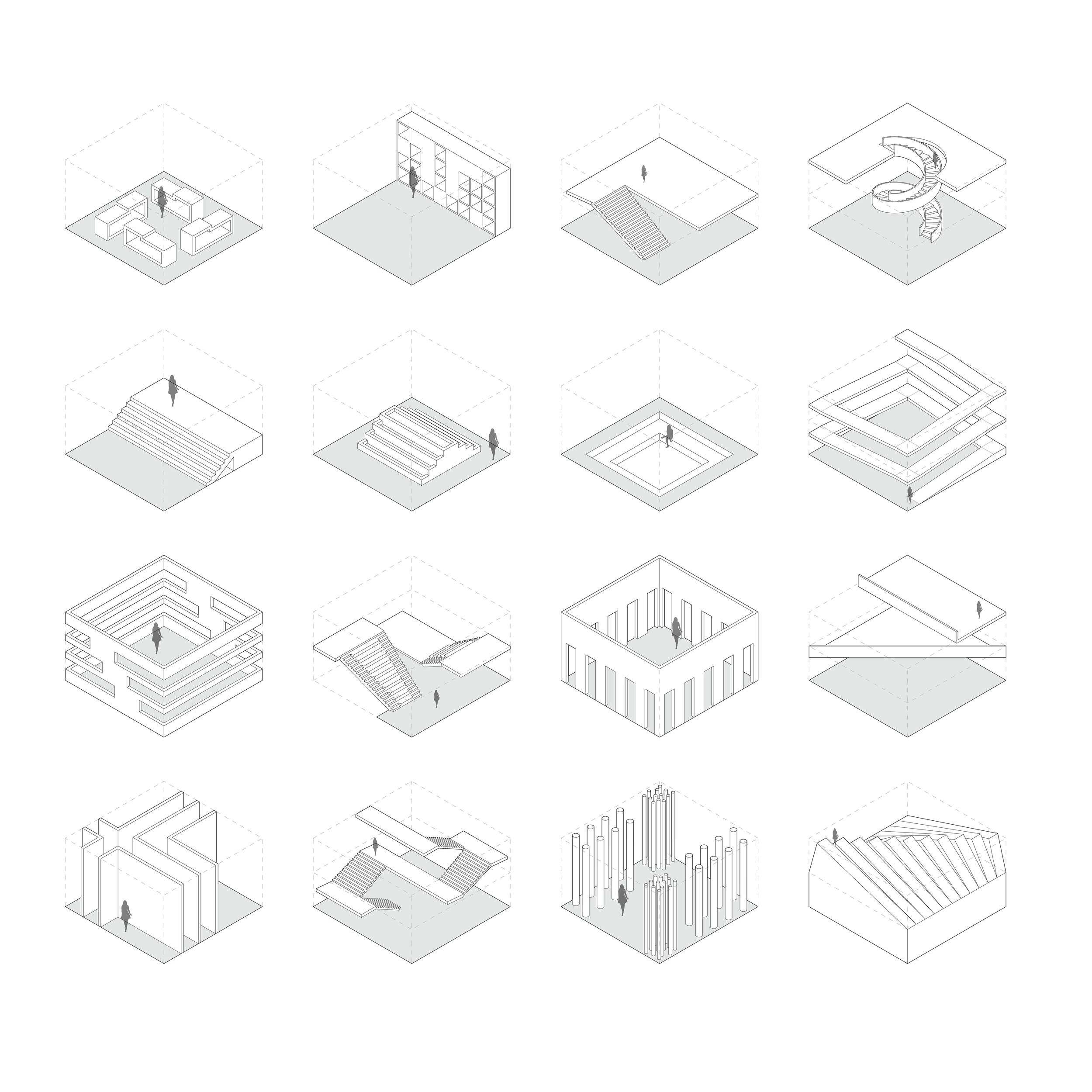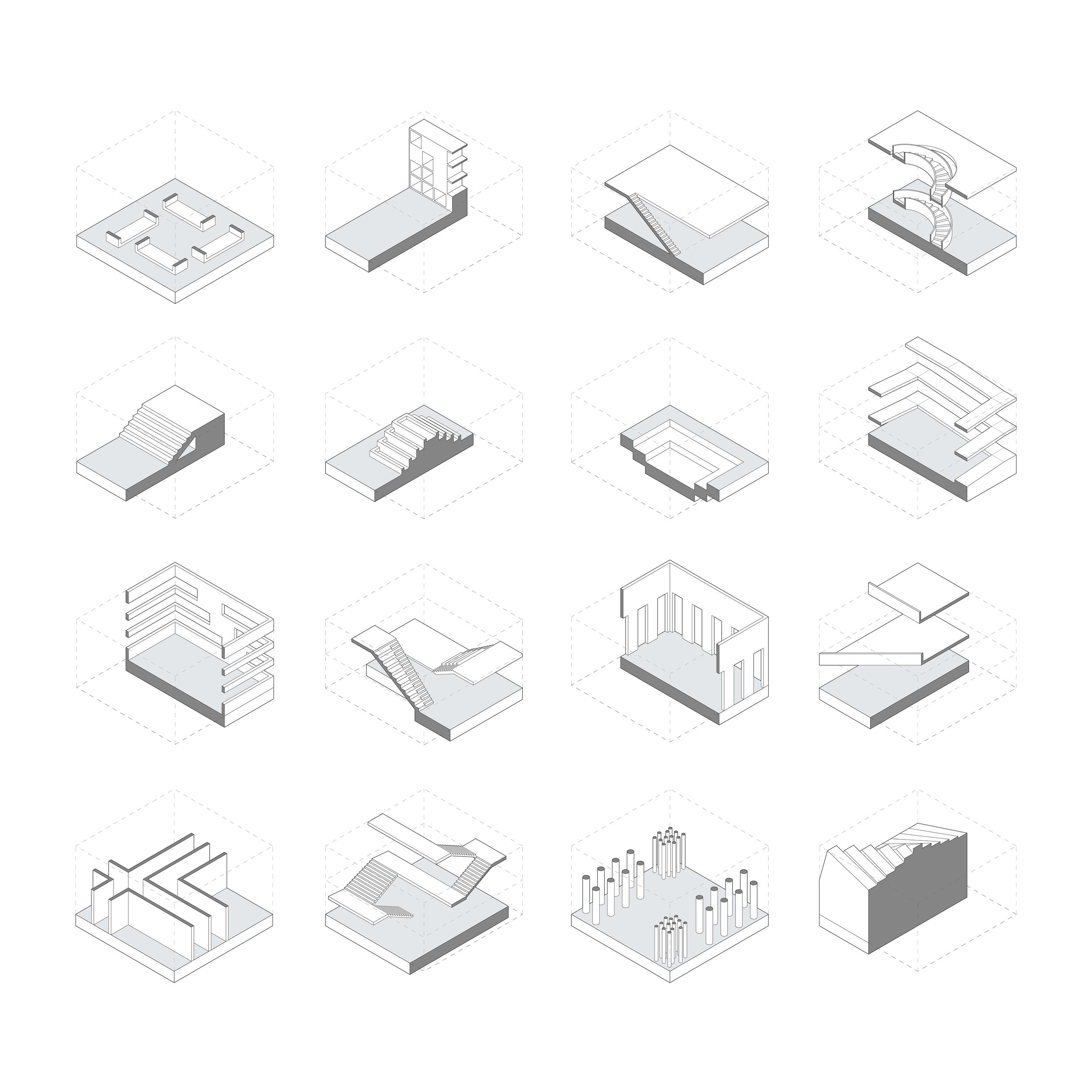Parsons - M.Arch Spatial Representation and Analysis 01




Inhabitable Fragments, 2019 by Tanya Flores, Olivia Haley-Schmit, and Amanda Park
Instructor(s): Josh de Sousa & Eirini Tsachrelia • TA: Tommy Yang
This course is designed to develop a student's representational skills through the lens of architectural thinking. Issues of how to draw and what to draw will be investigated, but more importantly, the class will focus on why a particular project might suggest a particular form of representation. The students will investigate drawing and form‐making as modes of communication and analysis, and as generative mediums of formal, tectonic, and spatial exploration. We’ll begin by observing, sketching, measuring, documenting, drafting, and building 1:1 model of a small everyday object (a paper cup). After which we’ll move into explorations of geometry, shape, organization, pattern, line, surface, volume, light, material, and color. Principles of two‐dimensional and three‐dimensional space will be studied in a series of lectures and assignments. Expedient in‐class assignments will develop the student’s graphic abilities and facility with free‐hand sketch. Students will also learn orthographic, paraline, descriptive, and perspective construction techniques. Graphic protocols and operational thinking will sharpen their analytical abilities, encouraging them to use drawing as an interrogative tool. Lectures on ways of seeing and complementary exercises are geared towards students developing autonomous and personal ideas through drawing. All exercises are intended to enhance the student’s ability to visualize architectural form and volume dimensionally and develop tools that reinforce and inform the design process.
Students will develop a series of analytical drawings as a means of investigation. The general goal of the course is to provide students with an understanding of graphic protocols and ways of seeing, representing, and curating architectural qualities, objects, and spaces. Class periods will range from in‐class free‐hand drawing exercises, pin‐ups, and lectures. There will be a strong emphasis on thinking and discovery through the act of drawing. Design concepts will be tested and developed via multiple types of drawing. By the end of the semester, students will have developed or refined a ‘hand’ in both digital and analog environments and be able to navigate between them in order to inform and enhance their design processes. The end goal of the course, students will understand how and when to use various modes of representation.